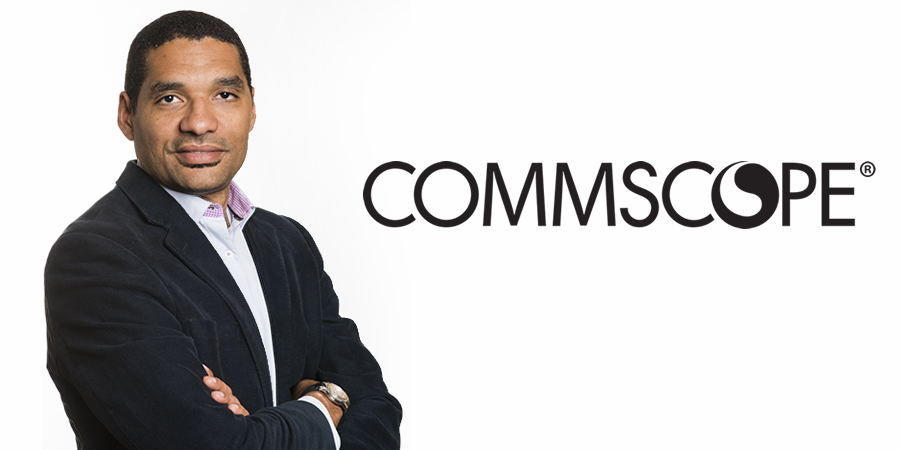CommScope is a global leader in providing wired and wireless solutions and innovations to the telecommunications industry. CommScope and the recently acquired ARRIS and Ruckus Networks are shaping the communications networks of the future. The combined company will provide greater technology and solutions with broader access to new and growing markets. During GITEX Technology Week, Telecom Review managed to secure an exclusive interview with Femi Oshiga, vice president of service providers in the Middle East & Africa.
What cutting-edge innovations and solutions did CommScope showcase at GITEX?
I’m very excited about what we have launched at GITEX this year. CommScope is focusing on helping customers meet the continuous growth of bandwidth. The adoption of disruptive technologies like AI, blockchain and cloud will only grow in prevalence and is yet another reminder that network operators will be faced with an unlimited appetite for capacity and data. In support of the Middle East’s network operators, CommScope is developing innovative fiber optic solutions to transport large amounts of data very quickly and reliably.
As smart cities add new mobile-connected devices like security cameras and air quality sensors, they must have access to electricity. This is not always an easy task considering devices may be several hundred meters away from a power source. Network operators are using CommScope’s powered fiber cable systems to speed and simplify installation, and power these types of network devices. We are showing solutions where you can power devices up to 3km away. This is a very simple but unique solution that anticipates the need for power.
Can you tell us about CommScope’s expanded portfolio in the Middle East due to the ARRIS and Ruckus acquisition?
The ARRIS and Ruckus acquisition makes us better positioned to contribute to new markets like the connected home. We’ve recently taken the next step in building the Smart Media Device (SMD) category, as a member of Amazon’s new Voice Interoperability Initiative. The Voice Interoperability Initiative focuses on enabling the seamless operation of multiple voice services on a single device, with support for multiple, simultaneous wake words.
It is said that there are going to be 30-50 devices in every future home. The home is becoming increasingly connected, and so are our digital experiences. We showcased how we’re delivering the next era of connectivity both to the home and throughout the home—with multi-Gigabit services, app platforms and HomeAssure, which optimizes coverage and performance with integrated extenders, apps, and cloud services. The power of HomeAssure to be able to make Wi-Fi connectivity transparent as well as make real time decisions to ensure consumer has the most optimal experience on their Wi-Fi connected devices is the critical platform for customer satisfaction.
CommScope also recently announced the R750 802.11ax indoor Wi-Fi access point for ultra-dense client environments is Wi-Fi CERTIFIED 6 from the Wi-Fi Alliance. This certification further validates the applicability of the R750 in ultra-dense client environments such as stadiums, hotels, convention centers and schools. The acquisition has allowed us to have a more complete connectivity solution across all sectors.
Is fiber the backbone of smart cities?
Absolutely. In the race to prepare for smart cities, fiber is essential in order to provide adequate density, capacity and performance. The amount of data and traffic will continue to grow exponentially along with the emergence of big network initiatives. The most efficient medium that can carry this traffic is undoubtedly fiber. In 2019, every user wants to be untethered and so wireless connection is important. There’s a misconception that 5G wireless is a completely wireless system. Most 5G deployments will use fiber as a backhaul to central aggregation points where the baseband units are located. Service providers have been deploying local fiber for a decade or more, but these deployments were based on the need to support broadband to the home and business along with 3G and 4G wireless infrastructure. With its highly dense networks, 5G will drive a need for more fiber. A recent European study showed that fiber-to-the-home (FTTH) networks need from 1 to 7 percent more fiber to become 5G-ready. Fiber is most definitely the backbone of smart cities and will make 5G successful.
What other trends will impact smart cities specifically in the Middle East?
There are a number of trends emerging. For instance, there are a lot of people moving into urban areas. This is a general trend around the world. As urbanization increases, cities will need to become more efficient. Governments are leading on smart city projects, investing in technologies that make the cities more efficient in responding to their citizens’ needs. From security to convenience, smart city technologies will change the way cities operate. But it all starts with connectivity – smart city residents, vehicles, systems and applications must be connected, and in most cases that involves fiber infrastructure.






